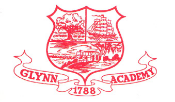Unit 1.6-Europe
- What
- Unit 1.6-Europe
- When
- 9/14/2020
Teacher : J. Chasse-Fernald Course/ Subject: AP World History class video: click here OR The Dark Ages...How Dark Were They, Really?: Crash Course World History #14 The Crusades - Pilgrimage or Holy War?: Crash Course World History #15 Homework: Due Friday (9/11) Unit 1.6-Europe-notes from Amsco Opening (I Do) An engaging process for lesson introduction that is specifically planned to encourage equitable and purposeful student participation. Describe the instructional process that will be used to introduce the lesson. TKES 1, 2, 3,4,5, 8,10 Standard: K.C.-3.2.I.B.ii.--Europe was politically fragmented and characterized by decentralized monarchies, feudalism, and the manorial system. K.C.-3.3.III.C.--Europe was largely an agricultural society dependent on free and coerced labor, including serfdom. K.C.3.1.III.D.v.--Christianity, Judaism, Islam, and the core beliefs and practices of these religions continued to shape societies in Europe. Learning Target: Success Criteria: * application of comparison claim development * use of evidence to support claim Introduction/Connection: Contextualization: 476-1200-periodization within medieval Europe DIRECT INSTRUCTION: * HRS CCoT: As in the previous period, which were the main forms of labor organization in Europe? (Included all that are applicable: free peasant agriculture, nomadic pastoralism, craft production and guild organization, along with various forms of coerced and unfree labor and government imposed labor taxes and military obligations.) ? * HRS causation: What factors contributed to urban revival (included all that are applicable: the end of invasions, the availability of safe and reliable transport, the rise of commerce and the warmer temperatures between 750 and 1300, increased agricultural productivity and subsequent rising population and greater availability of labor also contributed to urban growth. Work Period (We Do, You Do) Students learning by doing/demonstrating learning expectations. Describe the instructional process that will be used to engage the students in the work period. TKES 1, 2, 3, 4, 5, 7. 8,10 GUIDED PRACTICE: Task: using the prompt and documents: 1.) write a thesis with TWO categories of analysis AND apply a skill (This can be two separate sentences.) 2.) Write two strong paragraphs using four documents to support our claim. Which documents will you include in the paragraph? How will you use the document to support your claim? Prompt: Using the documents, evaluate the extent to which the attitudes of Christianity and Islam differed toward merchants and trade from 1200 until about 1500. INDEPENDENT/COLLABORATIVE PRACTICE/DIFFERENTIATION: The Vikings! - Crash Course World History 224 The Dark Ages...How Dark Were They, Really?:Crash Course World History #14 Closing (We Check) Describe the instructional process that will be used to close the lesson and check for student understanding . TKES : 1,2,3, 4,5,6,7,8 SUMMARIZE/CHECK FOR UNDERSTANDING: Key Takeaways A) Some states in Europe, like France and England, began to make the transition towards centralized political authority during this period. B) Some states in Europe, like the Holy Roman Empire, faced multiple challenges to centralization. C.) Social interaction in Europe during this period was undergoing dynamic change Bourgeoisie (Middle Class Merchants) Hanseatic League in Northern Europe Crusades would be a catalyst in Northern Italy Serfdom would remain entranced throughout much of the period until the appearance of the Black Death in 1347
* Explain the effects of agriculture on social organization in Europe from c. 1200 to c. 1450.
* Explain how the beliefs and practices of the predominant religions in Europe affected European society.
* HRS comparison- How did the expansion and intensification of long-distance trade routes often depended on peoples’ understanding of a particular regional environment and their subsequent technological adaptations to them? Use the following as examples: Vikings (Scandinavia), Arabs and Berbers (Sahara), and central Asian pastoral groups on the steppe) ?
